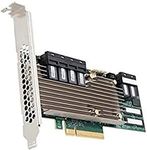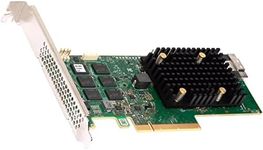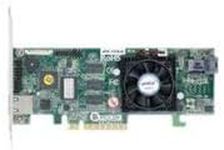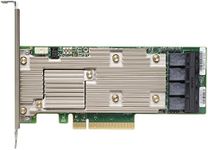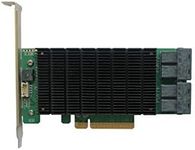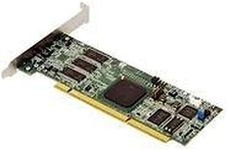Buying Guide for the Best Raid Controllers
When choosing a RAID controller, it's important to understand that this device manages the hard drives in your computer or server, ensuring data redundancy and improving performance. RAID stands for Redundant Array of Independent Disks, and it allows you to combine multiple hard drives into a single unit for better data management. The right RAID controller can significantly impact your system's reliability, speed, and storage capacity. Here are the key specifications to consider when selecting a RAID controller.RAID LevelsRAID levels refer to the different ways data can be stored across multiple drives. Common levels include RAID 0, RAID 1, RAID 5, RAID 6, and RAID 10. RAID 0 offers high performance but no redundancy, making it suitable for non-critical data. RAID 1 provides redundancy by mirroring data across two drives, ideal for critical data. RAID 5 and RAID 6 offer a balance of performance and redundancy, suitable for general use. RAID 10 combines mirroring and striping for high performance and redundancy, best for high-demand applications. Choose a RAID level based on your need for performance versus data protection.
Number of PortsThe number of ports on a RAID controller determines how many hard drives you can connect. More ports allow for greater storage capacity and flexibility in configuring your RAID array. If you plan to use a large number of drives or expand your storage in the future, opt for a controller with more ports. For smaller setups, fewer ports may suffice.
Interface TypeThe interface type of a RAID controller dictates how it connects to your motherboard. Common interfaces include SATA, SAS, and PCIe. SATA is suitable for consumer-grade drives and offers good performance for most users. SAS is designed for enterprise environments, providing higher reliability and speed. PCIe offers the fastest data transfer rates and is ideal for high-performance applications. Choose an interface that matches your system's requirements and the type of drives you plan to use.
Cache MemoryCache memory on a RAID controller temporarily stores data before writing it to the drives, improving performance. More cache memory can lead to faster data processing and better overall system performance. For general use, a smaller cache may be sufficient, but for high-demand applications like databases or video editing, a larger cache is beneficial.
Support for Hot SwappingHot swapping allows you to replace or add drives without shutting down your system. This feature is crucial for minimizing downtime and maintaining data availability, especially in enterprise environments. If you need continuous operation and quick drive replacement, ensure your RAID controller supports hot swapping.
CompatibilityCompatibility refers to whether the RAID controller works with your existing hardware and operating system. Check the controller's specifications to ensure it supports your motherboard, drives, and OS. Incompatible controllers can lead to performance issues or system instability. Always verify compatibility before making a purchase.
Management SoftwareManagement software allows you to configure and monitor your RAID array. Good software provides an intuitive interface, detailed reporting, and easy management of your RAID setup. Look for controllers that come with robust management tools to simplify setup and maintenance. This is especially important for users who need to manage complex RAID configurations.

